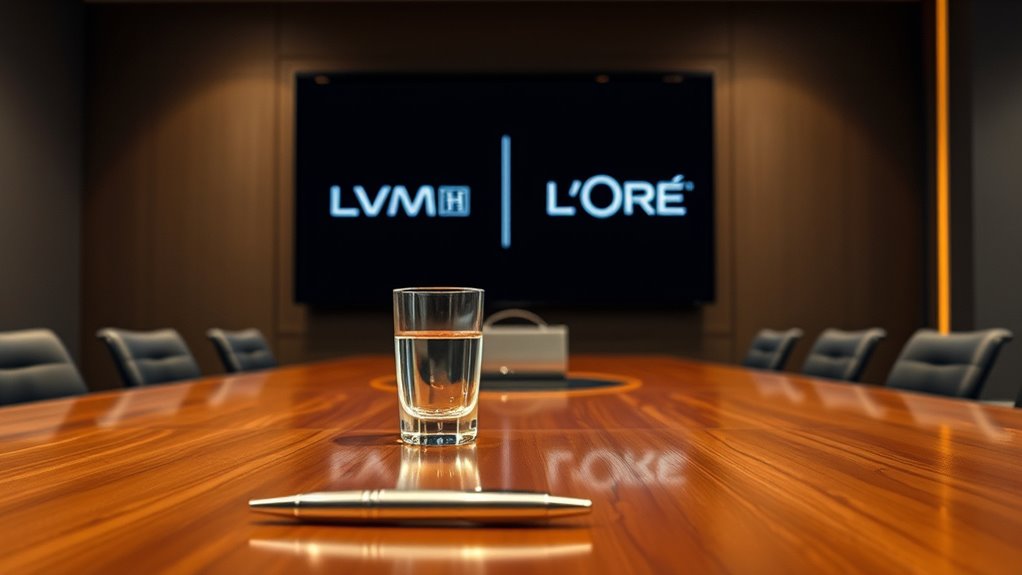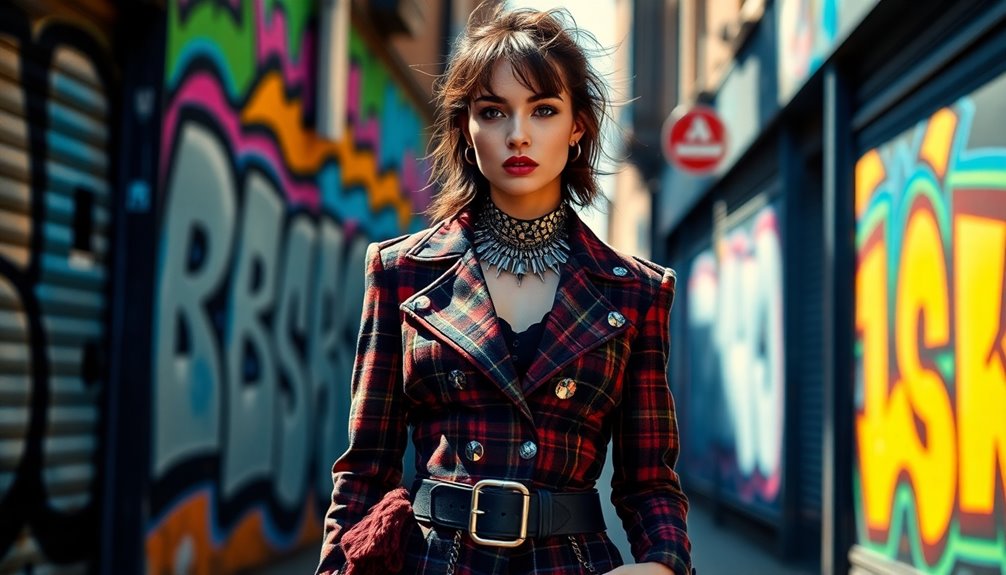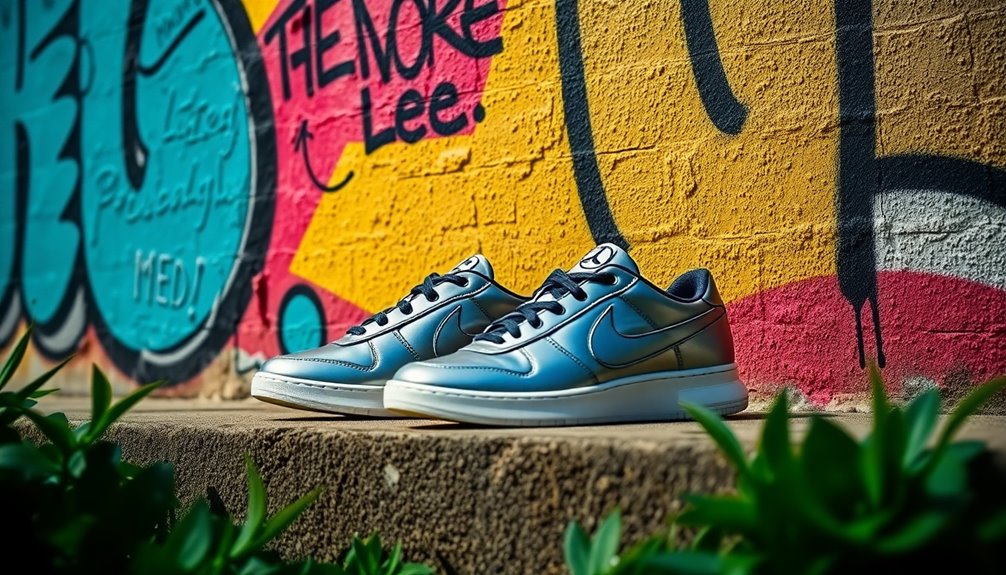Giorgio Armani’s will designates LVMH and L’Oréal as his preferred buyers, signaling a shift from the brand’s traditional family control. He plans to sell a phased stake, starting with 15% within 18 months of his passing, and up to nearly 55% within five years. This move aims to open new growth opportunities and bring strategic partnerships. Discover more about how these choices could shape Armani’s future and influence the luxury industry.
Key Takeaways
- Armani’s will designates LVMH and L’Oréal as preferred buyers for his company.
- The phased sale plan targets an initial 15% stake within 18 months of Armani’s death.
- The strategy shifts from family control to strategic partnerships with industry leaders.
- If preferred buyers decline, heirs may list Armani publicly for sale.
- The move aims to unlock growth opportunities and reshape Armani’s position in the luxury market.

Giorgio Armani’s recent will signals a major shift in the future of his fashion empire by officially naming LVMH and L’Oréal as preferred buyers. This decision marks a significant departure from Armani’s long-standing emphasis on maintaining full family control and independence. Instead, he’s setting the stage for a strategic partnership or eventual sale to these luxury giants, which could dramatically reshape the brand’s ownership and future direction. The will instructs his heirs to sell an initial 15% stake to either LVMH or L’Oréal shortly after his passing, with a clear plan to sell between 30% and nearly 55% within five years. This phased approach creates a competitive environment for control, encouraging the selected buyer to act swiftly and decisively to secure a meaningful stake. The process introduces a new chapter for Armani, moving away from the traditional family-held model towards more collaborative ownership structures that can liberate expanded growth opportunities.
The will also stipulates that if the preferred buyers decline or fail to complete the purchase, the heirs are authorized to list the company publicly. This safeguards Armani’s legacy by ensuring continuity regardless of the outcome. The initial stake sale must occur within 18 months of Armani’s death, emphasizing the urgency of moving ownership. The plan indicates a significant transfer of control, with the potential for the new owners to acquire up to nearly 70% of the empire. This scale of ownership transfer suggests a major shift in decision-making authority, positioning the brand for either a full integration into larger conglomerates or a new era of strategic partnership. The will also specifies that the sale process will be overseen by independent advisors to ensure transparency and fairness.
The Armani empire encompasses more than just apparel; it includes luxury brands such as Emporio Armani, Armani Exchange, Armani Privé, alongside hotel, restaurant ventures, and a highly profitable beauty division led by Armani himself. Giorgio Armani was the sole shareholder before his death, with real estate holdings managed separately by family members. The establishment of the Giorgio Armani Foundation in 2016 signifies a move toward preserving the brand’s legacy while preparing for this ownership transition. The foundation’s first task is to appoint a new CEO, ensuring leadership continuity and strategic focus.
LVMH, as France’s largest luxury conglomerate, offers extensive brand reach and market influence, while L’Oréal’s strong presence in cosmetics aligns perfectly with Armani’s lucrative beauty lines. Naming these two as preferred suitors signals Armani’s intent to partner with industry leaders capable of elevating the brand’s global position. The market reacts with surprise, as Armani has historically prioritized independence, but this shift could lead to a more integrated and expansive future. The move opens new opportunities for Armani’s brand to grow within the broader luxury landscape, blending heritage with the strengths of these industry leaders.
Frequently Asked Questions
How Will Armani’s Assets Be Divided Among Heirs?
You will see Armani’s assets divided mainly through the foundation’s control, with heirs actively involved in governance. The foundation, led by Dell’Orco and family members, manages the inheritance, ensuring Armani’s principles stay intact. Heirs may receive specific assets or roles, but most control remains centralized within the foundation. Share sales and strategic decisions are carefully structured to protect the brand, balancing inheritance rights with Armani’s legacy and the foundation’s oversight.
What Are the Specific Terms of Armani’s Will?
Your Armani will mandates selling 15% of the stake within 18 months of Giorgio’s death, then up to 54.9% over five years. The buyers must be major luxury or beauty firms like LVMH, L’Oréal, or Luxottica, with priority for these companies. If no deal happens, the shares will be listed publicly. The foundation, family, and aide hold shares to guarantee ongoing control and stability.
Will Armani’s Brands Be Sold or Retained?
You’re curious if Armani’s brands will be sold or retained. Given the brand’s strong heritage and family-controlled approach, there’s a high likelihood they’ll be retained to preserve their luxury identity. While potential sales to LVMH or L’Oréal could happen, Armani’s strategic focus on independence and heritage suggests they’ll prioritize retention, especially since the luxury sector values brand legacy—over 60% of consumers say brand history influences their loyalty.
How Might This Inheritance Affect the Fashion Industry?
This inheritance could considerably reshape the fashion industry by accelerating consolidation among luxury brands. You might see more collaborations and mergers, pushing smaller brands to seek alliances or sales. It could also prompt increased innovation, especially in sustainability and digital engagement, as big conglomerates leverage Armani’s design ethos. Overall, it’s likely to challenge traditional brand identities, prompting industry-wide shifts toward larger, more resourceful corporate players.
Are There Any Legal Disputes Expected From This Will?
You should expect legal disputes, as the will involves selling a 15% stake to major competitors like LVMH, which could trigger contestation among heirs. With two wills and recent rewrites, questions about validity may arise. Conflicting interests among family members and existing licensing contracts with potential buyers add complexity, increasing the likelihood of disputes over valuation, control, and strategic decisions. These factors make legal challenges almost inevitable.
Conclusion
You can see why Armani favors LVMH and L’Oréal—they’re giants with a combined market cap exceeding $500 billion, showcasing their dominance in luxury and beauty. It’s fascinating to think that Armani’s legacy could soon be intertwined with these industry leaders, potentially boosting brand reach and innovation. If history repeats itself, this strategic move might elevate Armani’s influence even further, solidifying its place among the world’s most iconic fashion and beauty empires.










